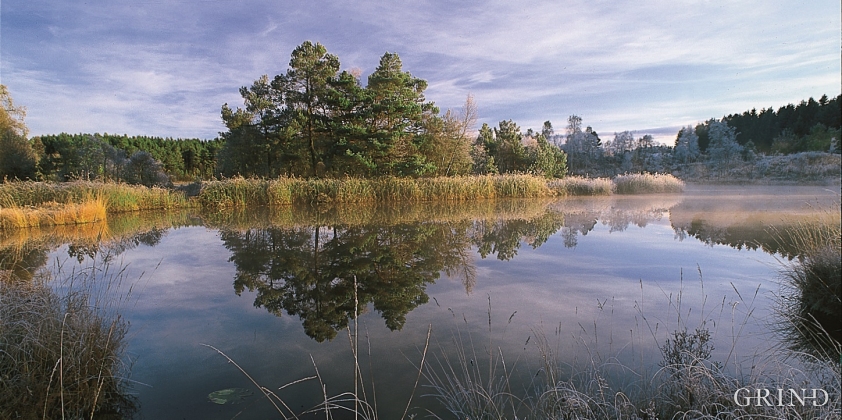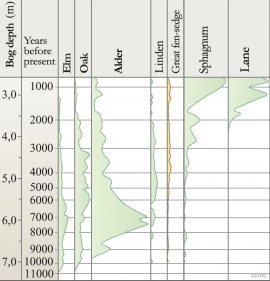Published: 22.07.2015 | Author: Bjørn Moe
SAME ADDRESS FOR SEVERAL THOUSANDS OF YEARS
It is difficult to imagine that a plant can grow at the same place for many thousands of years: Climate and local environment change. Different species grow up and die out. Nonetheless, some plants get established, but don't manage to spread into new areas, because the climate is at the edge of what they can tolerate. Great fen-sedge is just such a plant.
This swamp plant is found only at six localities in Norway: two on Stord, two in Bømlo and two in Kristiansand. Great fen-sedge was more common in Norway during the warmer climatic period from about 9000 -4500 years ago. What we find of great fen-sedge today is thought to be the remnants of a bigger distribution. This interpretation is based on pollen analysis of sediments from bogs and ponds, because the pollen grains of great fen-sedge have a shape that can be distinguished from bog rush and other sedges.
By Tveitavatnet on Stord it is easy to see this big plant from the highway, that goes by only 100 metres away. Great fen-sedge can be up to 1.5 metres high and it grows quite densely. It has long, serrated leaves. On the upper part of the grass blade, the flowers lie along a long, brown stalk. Down in the water great fen sedge has thick stalks that the blades shoot up from. When the stalks grow, the plant can put down new roots under water, as long as the environment is right. Great fen sedge is a finicky plant, and seems to thrive better in relatively mild winters and warmer summers.
Great fen sedge is also a tough plant; it has shown its ability to survive in the same pond over many thousands of years. At the same time, the plant is quite vulnerable to changes in its environment. When Lake Tveitavatnet became regulated down to 1.25 metres lower during a long period during the 1960-70s, great fen sedge ceased to blossom because its earthen roots got too dry. After the water level returned to normal, the plant grew fine and quickly began to flower.
We believe that great fen sedge has disappeared many places because the environment has changed from pond to bog. This recolonization process seems to go slowly, but is quite visible over the time span of several thousands of years. In the end, it is as if the plant suffocates.
Pollen diagram from a pond by Andal in Bømlo where great fen sedge grows. We can reckon that the plant has a similar history in Lake Tveitavatnet. Pollen diagram from a variety of localities in western Norway tells us that great fen sedge was more abundant during warmer periods than it is today. Even though the pollen diagram from Andal shows only a little great fen sedge pollen in relation to other plant types (for example, alder), it shows that great fen sedte nonetheless has been collecting in the bottom sediments in the pond more or less continuously for 9000 years. (Diagram: Inger Midtbø/Eva Bjørseth)
- Hafsten, U.1965.The Norwegian Cladium mariscus communities and their post-glacial history. UiB Årb. Naturvit. rekke 4:1–55.
- Midtbø, I. 1995. En vegetasjonshistorisk studie av Cladium mariscuslokaliteten på Bømlo, Hordaland. Cand. scient.oppg. UiB.Botanisk inst.




